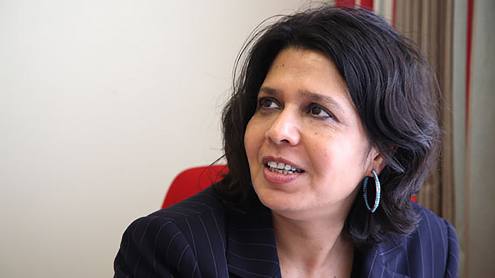Everyone’s talking about digital bank services (I even wrote a book about it) and the question 'what is a digital bank?' arises fairly often. I guess it’s because some people think of it as the addition of mobile apps and tablets; others believe it is creating a paperless bank; while others talk about a digitalisation of processes and products.
I was involved in a debate about this with a group of banking visionaries in mid-2014, and it was asked again during the various conferences I have attended in the past six months. Therefore, here’s a quick summary of my view on what constitutes a digital bank.
A digital core
First and foremost, it is a bank built with a vision to reach out to customers through digital augmentation. It is built specifically to offer the customer the service of their choice through the access of their choice. It believes wholeheartedly that, in order to do that and because the customer now has so many different methods to access, the bank therefore has to be designed and created upon a digital core infrastructure. The digital core is a consistent enterprise-wide, cleansed data store that is accessible internally and externally through a stratum of access layers.
In other words, the start point of a digital bank is to be IP-enabled at its core. No legacy. No spaghetti. No barriers to its beating heart, except those that protect against fraud and cyber attacks.
Second, the digital bank then creates outreach through access. That access can be both physical and digital, but it is outreach to the digital core on the basis of providing customer choice. In other words, the customer may visit a branch, call the contact centre, make a comment on Twitter or Facebook, or touch the bank’s mortgage offers via a Google search. Because the bank has a digital core, it will be aware of all these access points and touches, and will respond accordingly and consistently. For example, if the customer has researched mortgage deals online on an evening, checked the latest interest rates on the app the next morning and walked into the branch at lunchtime, the bank will be ready with a mortgage specialist at hand – possibly through a videolink to a small branch – to provide the advice needed for the customer to make the decision over the mortgage and its term.
Third, the digital bank has an organisation that is geared to digital. The main form of customer outreach is through social media on the network, via video to advisors, and focused upon being at the point of relevance to the customer in their daily life. It focuses upon augmenting the customers’ life through digital outreach, but recognises that the real magic is when the customer engages directly with human contact. The human contact through the network, the telephone or face to face is the magical touchpoint. All others are purely geared towards removing friction through digital enhancement.
Fourth, the digital bank will have an innate knowledge of the customer. They will leverage data as a competitive differentiation, and see a single view of the customer as the ultimate view. They will know that data association and predictive, proactive, proximity-based service is the place they will win.
It's in the culture
Finally, the digital bank will have a boardroom that sees digital as its culture rather than a project. The bank does not have a digital team or a budget for digital. It has integrated digital into its core, and sees it as the duty of everyone in the bank to identify how to use digital series to touch the customer better, at a lower cost and with an intimacy and data differentiation far more fitting for the digital age. In other words, an Amazon processor of finance rather than a Barnes & Noble.
There are many other factors that create a digital bank, but this last piece is probably the most important: that it is the leadership that creates a digital culture. Digital banks do not see digital as an adjunct or addition, but as core. They have re-engineered their bank to be 100% customer-aligned through that digital core. That’s a real digital bank.
Chris Skinner is an independent financial commentator and chairman of the London-based Financial Services Club.






